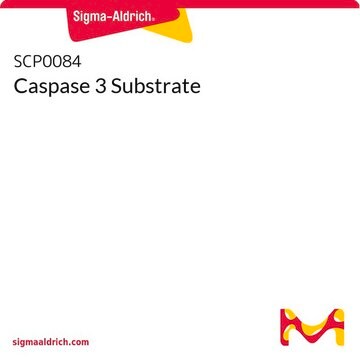MABE148
Anti-HMGB1 Antibody, clone HMG1-5H6
clone HMG1-5H6, from hamster
Synonyme(s) :
High mobility group protein 1, Sulfoglucuronyl carbohydrate binding protein, high mobility group box 1, high-mobility group (nonhistone chromosomal) protein 1, high-mobility group box 1
About This Item
Produits recommandés
Source biologique
hamster
Niveau de qualité
100
300
Forme d'anticorps
purified antibody
Type de produit anticorps
primary antibodies
Clone
HMG1-5H6, monoclonal
Espèces réactives
rat, mouse, human
Technique(s)
flow cytometry: suitable
immunofluorescence: suitable
western blot: suitable
Numéro d'accès NCBI
Numéro d'accès UniProt
Conditions d'expédition
wet ice
Modification post-traductionnelle de la cible
unmodified
Informations sur le gène
human ... HMGB1(3146)
Description générale
Immunogène
Application
Flow Cytometry Analysis: A representative lot detected HMGB1 in RAW264.7 cells treated with Cytofix/Cytoperm. (Image courtesy of Dr. Hideo Yagita, Juntendo University School of Medicine.)
Epigenetics & Nuclear Function
Epigenetics & Nuclear Function
Chromatin Biology
Cell Cycle, DNA Replication & Repair
Qualité
Western Blot Analysis: 1:500 dilution of this antibody detected HMGB1 on 10 µg of NIH/3T3 cell lysate.
Description de la cible
Forme physique
Stockage et stabilité
Remarque sur l'analyse
NIH/3T3 cell lysate
Clause de non-responsabilité
Not finding the right product?
Try our Outil de sélection de produits.
En option
Code de la classe de stockage
12 - Non Combustible Liquids
Classe de danger pour l'eau (WGK)
WGK 1
Point d'éclair (°F)
Not applicable
Point d'éclair (°C)
Not applicable
Certificats d'analyse (COA)
Recherchez un Certificats d'analyse (COA) en saisissant le numéro de lot du produit. Les numéros de lot figurent sur l'étiquette du produit après les mots "Lot" ou "Batch".
Déjà en possession de ce produit ?
Retrouvez la documentation relative aux produits que vous avez récemment achetés dans la Bibliothèque de documents.
Notre équipe de scientifiques dispose d'une expérience dans tous les secteurs de la recherche, notamment en sciences de la vie, science des matériaux, synthèse chimique, chromatographie, analyse et dans de nombreux autres domaines..
Contacter notre Service technique





